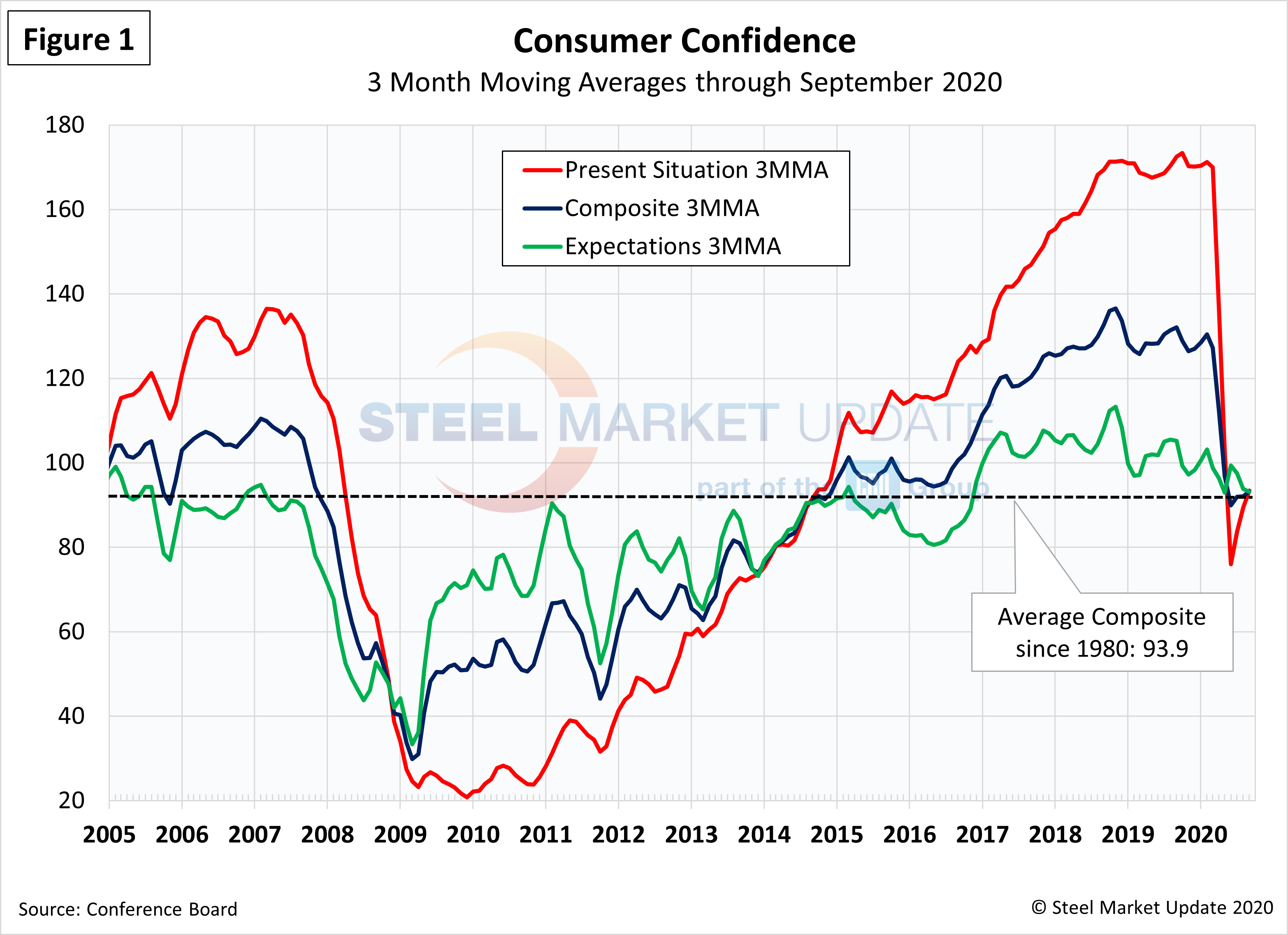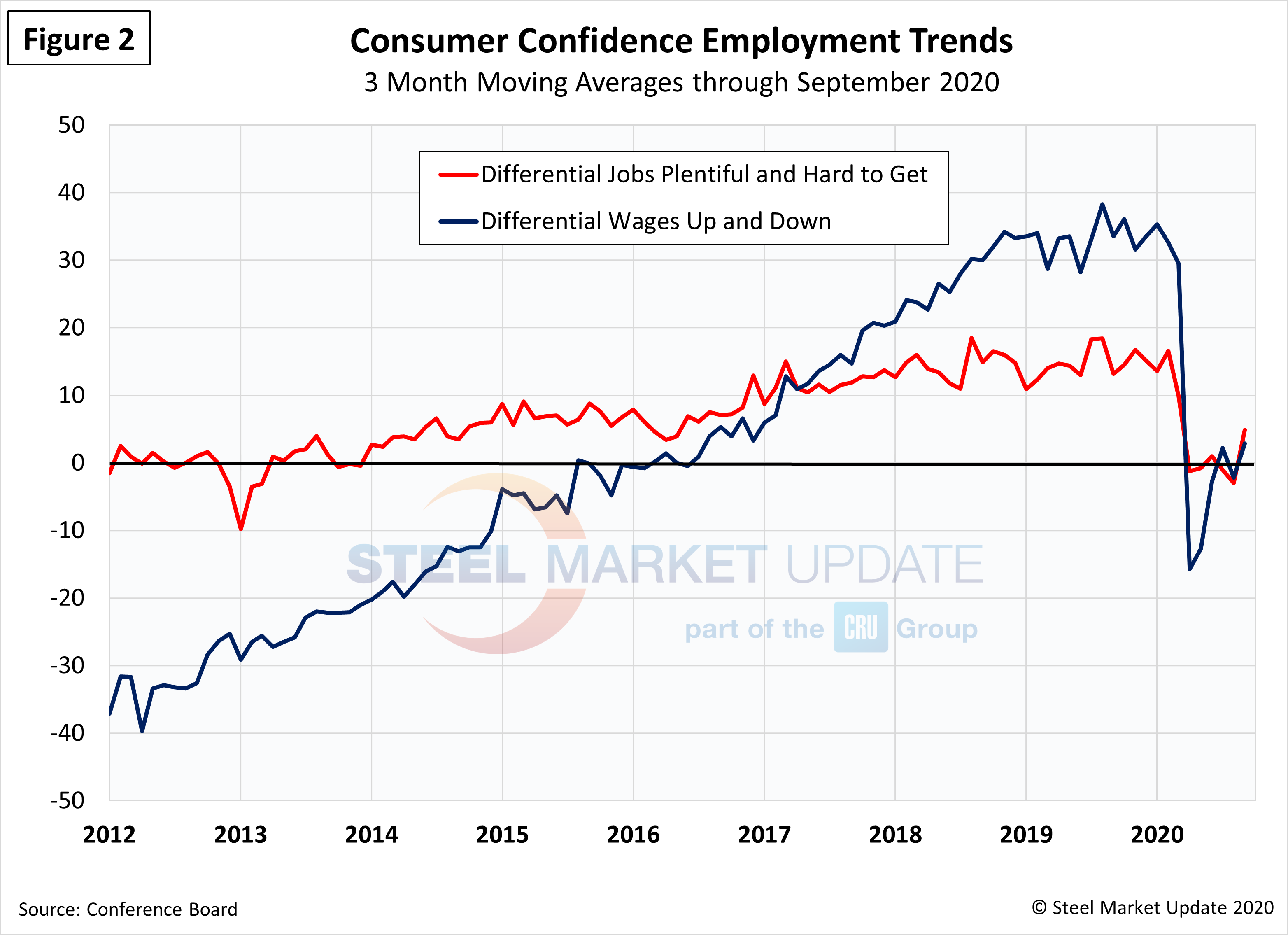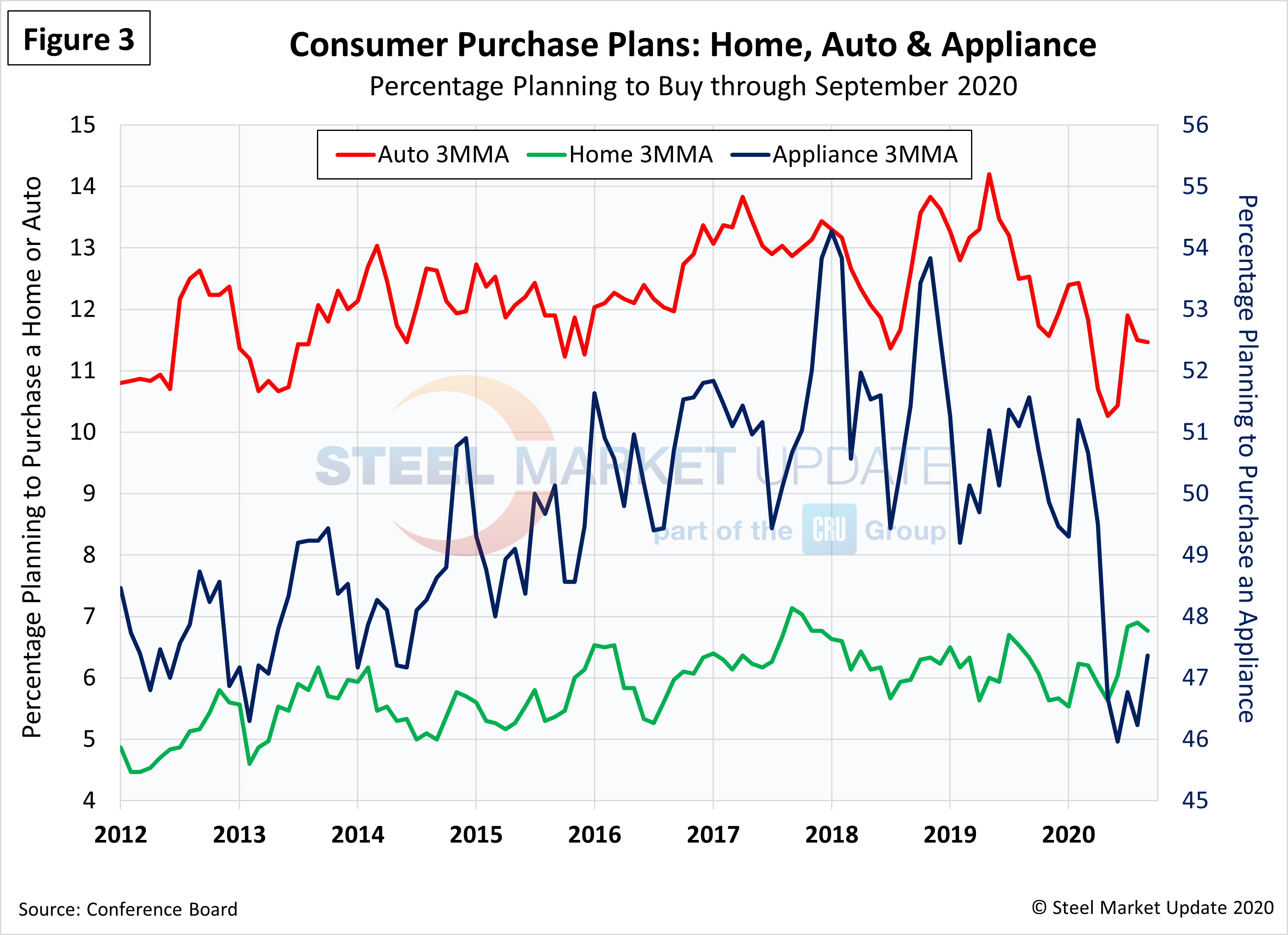Market Data

October 6, 2020
Consumer Confidence Improves in September
Written by David Schollaert
U.S. consumer confidence has suffered drastically from the pandemic, but has shown some positive signs of late. The composite value of consumer confidence in September, reported by The Conference Board, was 101.8, surpassing the 100 mark for the first time since March 2020. The three-month moving average (3MMA) moved up to 93.3. Despite the increase, the 3MMA remains a far cry from 130.4 seen in February.
“Consumer confidence increased sharply in September after back-to-back monthly declines, but remains below pre-pandemic levels,” said Lynn Franco, Senior Director of Economic Indicators at The Conference Board. “A more favorable view of current business and labor market conditions, coupled with renewed optimism about the short-term outlook, helped spur this month’s rebound in confidence. Consumers also expressed greater optimism about their short-term financial prospects, which may help keep spending from slowing further in the months ahead.”
The Conference Board’s composite index is made up of two sub-indexes: the consumer’s view of the present situation and his or her expectations for the future. The 3MMA of the consumer’s view of the present situation dropped from 171.2 in February to 76.0 in June, then recovered to 93.4 in September. Future expectations were affected less dramatically by the pandemic and declined from 103.2 in February to 93.2 in September, also on a 3MMA basis. Figure 1 shows the trend lines of both subcomponents. The view of the present situation has collapsed below trend, but expectations not as much. Expectations have been declining since November 2018 (Figure 1).

On a 3MMA basis comparing September 2020 with September 2019, the present situation was down by 79.1 points and expectations were down 12.0 points (Table 1). The consumer confidence report also includes both employment data and some purchase plans and these are summarized in Table 1. The color codes show improvement or deterioration of the individual components.

In October last year, the differential between those finding jobs plentiful and those having difficulty was positive 36.1, but that fell to negative 15.7 in April and improved to positive 2.9 in September (Figure 2). Expectations for future wage change were similarly affected. In September last year, the differential was positive 13.2 and in September of this year was positive 4.9.

The trend across spending plans for consumer goods as measured by automobiles and appliances has seen a similar outcome–some positive improvements over the past two consecutive months, but still behind pre-pandemic levels (Figure 3).

SMU Comment: Although consumer confidence currently pales in comparison with year-ago numbers as a response to the global pandemic, overall sentiment has improved some over the past couple of months. Improved consumer confidence, albeit tempered, has aided the recovery seen in steel demand and prices, which is dependent on the growth of GDP and consumers’ willingness to spend. Consumer confidence should be treated as a leading indicator in steel industry corporate planning.
About The Conference Board: The Conference Board is a global, independent business membership and research association working in the public interest. The monthly Consumer Confidence Survey®, based on a probability-design random sample, is conducted for The Conference Board by Nielsen. The index is based on 1985 = 100. The composite value of consumer confidence combines the view of the present situation and of expectations for the next six months.







